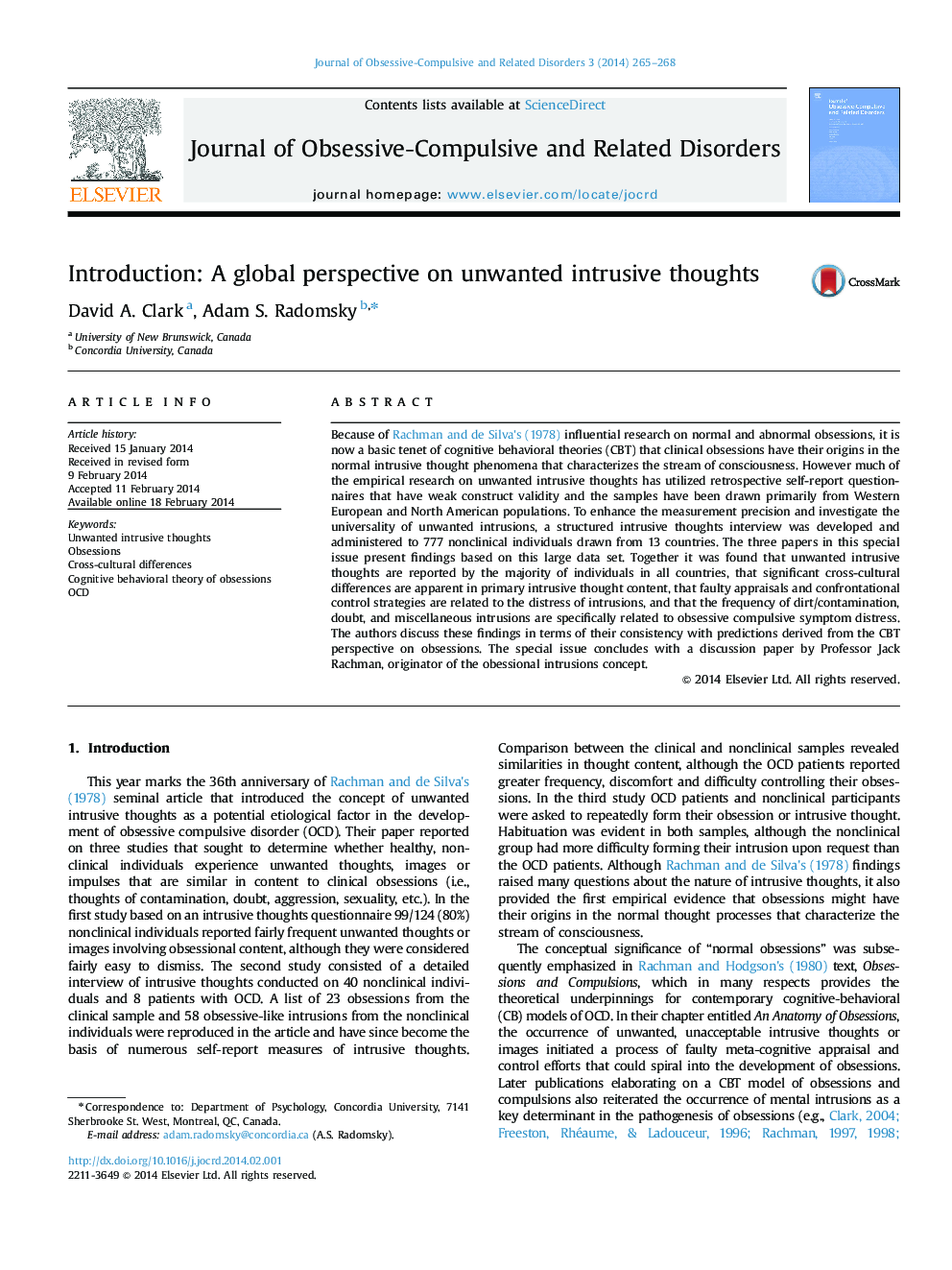| Article ID | Journal | Published Year | Pages | File Type |
|---|---|---|---|---|
| 912272 | Journal of Obsessive-Compulsive and Related Disorders | 2014 | 4 Pages |
Abstract
Because of Rachman and de Silva׳s (1978) influential research on normal and abnormal obsessions, it is now a basic tenet of cognitive behavioral theories (CBT) that clinical obsessions have their origins in the normal intrusive thought phenomena that characterizes the stream of consciousness. However much of the empirical research on unwanted intrusive thoughts has utilized retrospective self-report questionnaires that have weak construct validity and the samples have been drawn primarily from Western European and North American populations. To enhance the measurement precision and investigate the universality of unwanted intrusions, a structured intrusive thoughts interview was developed and administered to 777 nonclinical individuals drawn from 13 countries. The three papers in this special issue present findings based on this large data set. Together it was found that unwanted intrusive thoughts are reported by the majority of individuals in all countries, that significant cross-cultural differences are apparent in primary intrusive thought content, that faulty appraisals and confrontational control strategies are related to the distress of intrusions, and that the frequency of dirt/contamination, doubt, and miscellaneous intrusions are specifically related to obsessive compulsive symptom distress. The authors discuss these findings in terms of their consistency with predictions derived from the CBT perspective on obsessions. The special issue concludes with a discussion paper by Professor Jack Rachman, originator of the obessional intrusions concept.
Related Topics
Health Sciences
Medicine and Dentistry
Psychiatry and Mental Health
Authors
David A. Clark, Adam S. Radomsky,
